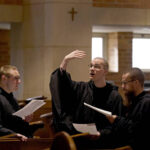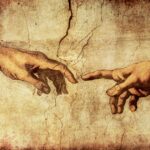Published October 16, 2002
The Catholic Difference
Philip Jenkins, a distinguished historian and professor of religious studies at Penn State, is an intellectual provocateur who backs up his provocations with data. Cutting straight across the academic grain, Professor Jenkins recently argued in the Atlantic Monthly that religion will replace ideology as “the prime animating…force in human affairs” in the twenty-first century – although he concedes that religion’s impact on the new century may also lead to serious conflicts.
Professor Jenkins’s Atlantic essay also had a challenge for North American Catholics.
Beset by scandals and mired in endless debates over doctrine and practice, Catholics in the United States and Canada are virtually oblivious, Jenkins suggests, to the basic fact of Catholic life in the twenty-first century: that world Catholicism is becoming a predominantly Third World religion. Moreover, he argues, the overwhelming majority of Latin American and African Catholics don’t give a fig about the issues that absorb so much Catholic energy here and in western Europe. The Catholicism of what he nicely calls “the Rest” (as distinguished from “the West”) is lived in a milieu strikingly similar to that of the New Testament: in “the Rest,” the supernatural is as real as the natural world; Jesus is “the embodiment of divine power, who overcomes the evil forces that inflict calamity and sickness upon the human race;” authority is respected; devotional life is vibrant – and no one is clamoring for a “democratized” Church.
Part of the fascination of Jenkins’ argument comes from his often-surprising numbers. To take a few notable examples:
- Three quarters of the Catholics baptized in 1998 came from “the Rest:” Latin America (eight million), Africa (three million), Asia (a bit under three million).
- There are more baptisms performed in the Philippines these days than in Italy, Poland, France, and Spain – combined.
- In the early 1950s, there were some 16 million Catholics in Africa. There are 120 million African Catholics today, and there will likely be 240 million in thirty years.
- By 2025, in sum, almost three-quarters of world Catholicism will be located in Africa, Asia, and Latin America.
Furthermore, these numbers tell us something about a distant, and now often-maligned, past. As Professor Jenkins puts it, “the likely map of twenty-first-century Catholicism represents an unmistakable legacy of the Counter-Reformation and its global missionary adventures.” Turns out that the Counter-Reformation wasn’t all about the Inquisition, religious wars, and burning heretics, after all. The Counter-Reformation of the seventeenth century made possible the world Catholicism of the twenty-first. (Which in turn raises an interesting question about the concept of “reform” in the often self-absorbed Church of the western world today: can we say that ours is a time of genuinely Catholic reform when the missionary impulse has become so attenuated in the West?)
Jenkins also challenges those proponents of secularization who are accustomed to thinking that intensely supernatural religion is something from the sticks – something that people “get over” when they make it to the big city. The truth of the matter, Jenkins argues from the numbers, is that what’s going on in “the Rest” is often a “direct by-product of urbanization.” The new megalopolises in the global “South” usually lack social infrastructure and health services. As people feel adrift on an alien and sometimes brutal urban landscape, religious communities that provide basic health care, elementary education, and social welfare services (as well as a way of making transcendent sense of suffering) are immensely attractive.
Which is, interestingly enough, precisely the argument that another against-the-grain scholar, Rodney Stark, made about the Christian situation in the ancient Mediterranean world: from a sociological point of view, primitive Christianity “made it” in late antiquity because it provide networks of support and care in violent, cruel urban environments.
“Progressive” Catholics often dream of a Third Vatican Council that would bring the Catholic Church more in line with secular modernity on issues of sexual morality, gender, and authority. Philip Jenkins suggests that a Third Vatican Council, led by bishops from “the Rest,” would do precisely the opposite: it would vigorously re-affirm classic Catholic doctrine and morality.
All of which suggests that the relationship between “”the West” and “the Rest” is going to be very interesting indeed, in the Catholicism of the new century.
George Weigel is Distinguished Senior Fellow of the Ethics and Public Policy Center in Washington, D.C. and holds EPPC’s William E. Simon Chair in Catholic Studies.








